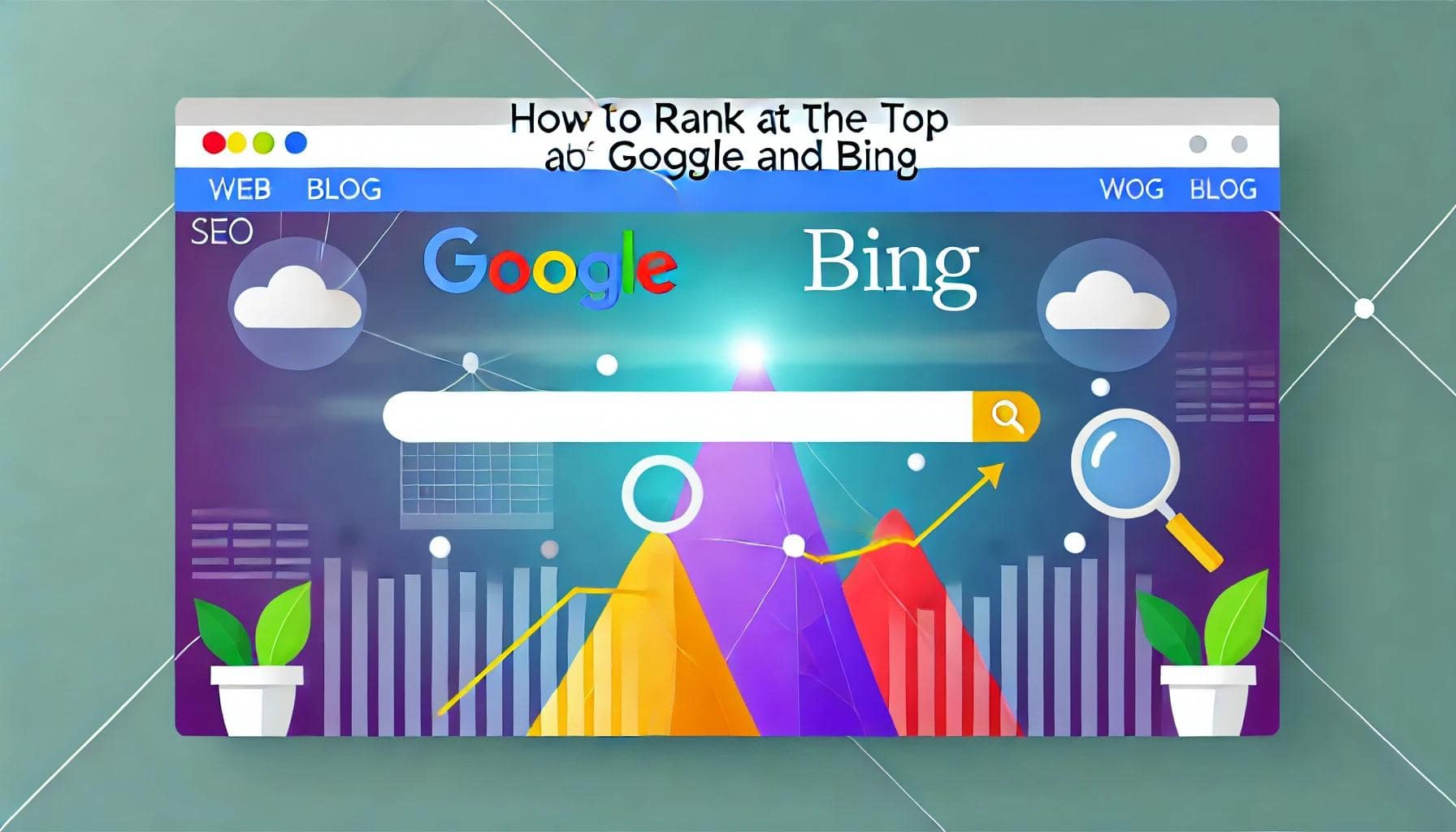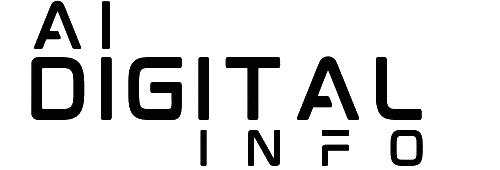How to rank at the top of Google and Bing is a question every website owner asks. Achieving this goal is essential for driving organic traffic, increasing visibility, and boosting conversions. Ranking at the top requires a solid SEO strategy that leverages current best practices and optimization techniques. This guide will walk you through the most effective ways to help your website consistently rank at the top of Google and Bing, giving you a competitive edge in your industry.
Why Ranking High on Google and Bing is Crucial
Ranking high on Google and Bing means more visibility, increased web traffic, and higher conversion rates. Research shows that the majority of users don’t look past the first page of search results, with the top three results capturing the bulk of clicks. This makes it critical for your business or website to secure a place among the top results.
By following the key strategies outlined in this guide, you will be able to optimize your site to rank at the top of Google and Bing search results and generate more organic traffic.
Keyword Research: The Foundation of Ranking Success
One of the first steps in ensuring your website ranks at the top of Google and Bing is conducting thorough keyword research. Understanding the keywords your target audience is searching for will help you optimize your content and drive relevant traffic to your site.
How to Find the Right Keywords
Use keyword research tools such as Google Keyword Planner, SEMrush, or Ahrefs to find high-volume, low-competition keywords that align with your business or industry. Focus on long-tail keywords—these are more specific search terms with lower competition but higher user intent.
For example, instead of targeting the broad keyword “SEO tips,” you could aim for “how to rank at the top of Google and Bing.” These long-tail keywords attract users who are closer to converting because they know what they are looking for.
Where to Use Your Keywords
Once you have identified your target keywords, it’s crucial to use them strategically throughout your website. Some key places to include your keywords are:
- Title Tags: Make sure your primary keyword appears at the beginning of your title tag. This is a key ranking factor.
- Meta Descriptions: While meta descriptions don’t directly impact rankings, they influence click-through rates (CTR). Include your keyword here to attract clicks.
- Headings (H1, H2, H3): Organize your content using headers and include keywords naturally in these sections.
- Body Content: Ensure your keyword appears naturally throughout the content without overstuffing.
- Image Alt Text: Optimize images by using descriptive alt text that includes your keywords.
On-Page SEO: Optimizing Your Content for Google and Bing
On-page SEO refers to optimizing the elements within your website to improve your chances of ranking higher in search results. This includes optimizing content, meta tags, headers, and more.
Optimize Title Tags and Meta Descriptions
Title tags are one of the most important on-page SEO factors. They should be concise, compelling, and include your primary keyword. Meta descriptions, while not a direct ranking factor, can impact your click-through rate (CTR), so make them engaging and keyword-rich.
- Best Practice: Title tags should be around 60 characters or less, and meta descriptions should not exceed 160 characters. Both should entice the user to click and include your target keyword “how to rank at the top of Google and Bing.”
Structure Content Using Headers
Use header tags (H1, H2, H3) to structure your content in a way that’s easy to read for both users and search engines. Your H1 tag should include your primary keyword, while H2 and H3 tags should support it with relevant subtopics and secondary keywords.
Internal Linking for SEO
Internal linking is a powerful on-page SEO tactic that improves the crawlability of your website and helps search engines understand the structure of your site. By linking related pages together, you improve navigation, keep visitors on your site longer, and pass link equity from high-ranking pages to other important pages.
- Pro Tip: Use anchor text that includes your primary or secondary keywords when linking to other pages on your site.
Optimize Images for SEO
Images can enhance the user experience, but they also need to be optimized for search engines. Compress images to reduce load times and use descriptive filenames and alt text that include your target keyword.
Creating High-Quality Content That Ranks
Content is the backbone of SEO, and search engines reward websites that provide valuable, relevant, and well-organized information. To rank at the top of Google and Bing, your content must match user intent and provide answers that your audience is searching for.
Focus on User Intent
Understanding what users are looking for when they search for your target keyword is essential. There are generally four types of search intent:
- Informational: The user is seeking information (e.g., “how to rank at the top of Google and Bing”).
- Navigational: The user is looking for a specific website or page.
- Transactional: The user intends to make a purchase or complete an action.
- Commercial Investigation: The user is comparing products or services before making a decision.
Create content that matches the intent behind the keyword you’re targeting. For example, an article about “how to rank at the top of Google and Bing” should offer practical, actionable advice on improving SEO and increasing rankings.
Write In-Depth Content
Longer, more in-depth content typically performs better in search engine rankings. Aim to create comprehensive articles that fully cover the topic. However, make sure that your content is well-organized and easy to read, using bullet points, lists, and subheadings to break up the text.
Use E-A-T Principles
Google looks for content that demonstrates Expertise, Authoritativeness, and Trustworthiness (E-A-T). This is particularly important for websites in industries such as health, finance, or legal. To boost your E-A-T:
- Cite credible sources and research.
- Include author bios to showcase the expertise of your writers.
- Build backlinks from authoritative sites within your industry.
Off-Page SEO: Building Authority with Backlinks
Off-page SEO refers to actions taken outside of your website that help improve your rankings. The most important off-page SEO factor is backlink building—acquiring links from other websites that point to your content.
Building High-Quality Backlinks
Backlinks from authoritative websites signal to search engines that your content is trustworthy and valuable. However, not all backlinks are created equal—focus on earning links from reputable, high-authority sites in your industry.
Here are some effective strategies for building high-quality backlinks:
- Guest Blogging: Contribute valuable content to reputable sites in your industry and include a link back to your site.
- Broken Link Building: Find broken links on relevant websites and offer your content as a replacement.
- Skyscraper Technique: Find popular content in your niche and create a better, more comprehensive version. Reach out to websites that linked to the original content and suggest linking to your improved version.
Social Media and SEO
While social media shares and likes aren’t direct ranking factors, they can drive traffic to your website and generate backlinks. Share your content across platforms like Facebook, Twitter, LinkedIn, and others to boost its visibility and reach a larger audience.
Technical SEO: Enhancing Your Website’s Performance
Technical SEO ensures that your website is properly optimized for search engine crawlers and bots. Without strong technical SEO, even the best content might fail to rank.
Optimize for Mobile-Friendliness
Google uses mobile-first indexing, meaning it primarily uses the mobile version of your site to determine rankings. Ensure that your website is responsive and provides a seamless experience on all devices, especially smartphones and tablets.
Improve Site Speed
Site speed is a critical ranking factor. If your website takes too long to load, users are likely to leave, which increases your bounce rate and negatively impacts your rankings. Use tools like Google PageSpeed Insights to identify any issues with your site’s loading times and address them promptly.
Secure Your Site with HTTPS
Google and Bing favor websites that provide a secure browsing experience. Make sure your website uses HTTPS encryption, which not only improves security but also boosts your SEO.
Fix Crawlability Issues
Ensure that search engines can crawl and index your site effectively. Submit an XML sitemap to Google Search Console and Bing Webmaster Tools, and fix any crawl errors or broken links that could be harming your rankings.
Local SEO: Capture Local Search Traffic
For businesses that serve specific geographic areas, local SEO is critical for ranking at the top of local search results.
Optimize Your Google Business Profile
Claim and optimize your Google Business Profile. Make sure your Name, Address, and Phone Number (NAP) is consistent across your website and all online directories. Add business hours, photos, and encourage satisfied customers to leave reviews, as this can significantly boost your local SEO rankings.
Build Local Citations
Local citations are mentions of your business on other websites, such as online directories like Yelp and TripAdvisor. Ensure your NAP information is accurate across all platforms to help search engines verify your business information.
Earn Local Backlinks
Earn backlinks from local websites, such as community blogs, news outlets, and industry-related businesses in your area. Local backlinks not only help your overall SEO but also improve your rankings in local search results.
Conclusion: How to Rank at the Top of Google and Bing
Achieving top rankings on Google and Bing requires a well-rounded SEO strategy that focuses on keyword optimization, high-quality content, technical SEO, backlink building, and local SEO. By following the strategies outlined in this guide, you will be well on your way to improving your search engine rankings, driving more organic traffic, and ultimately, achieving your.


